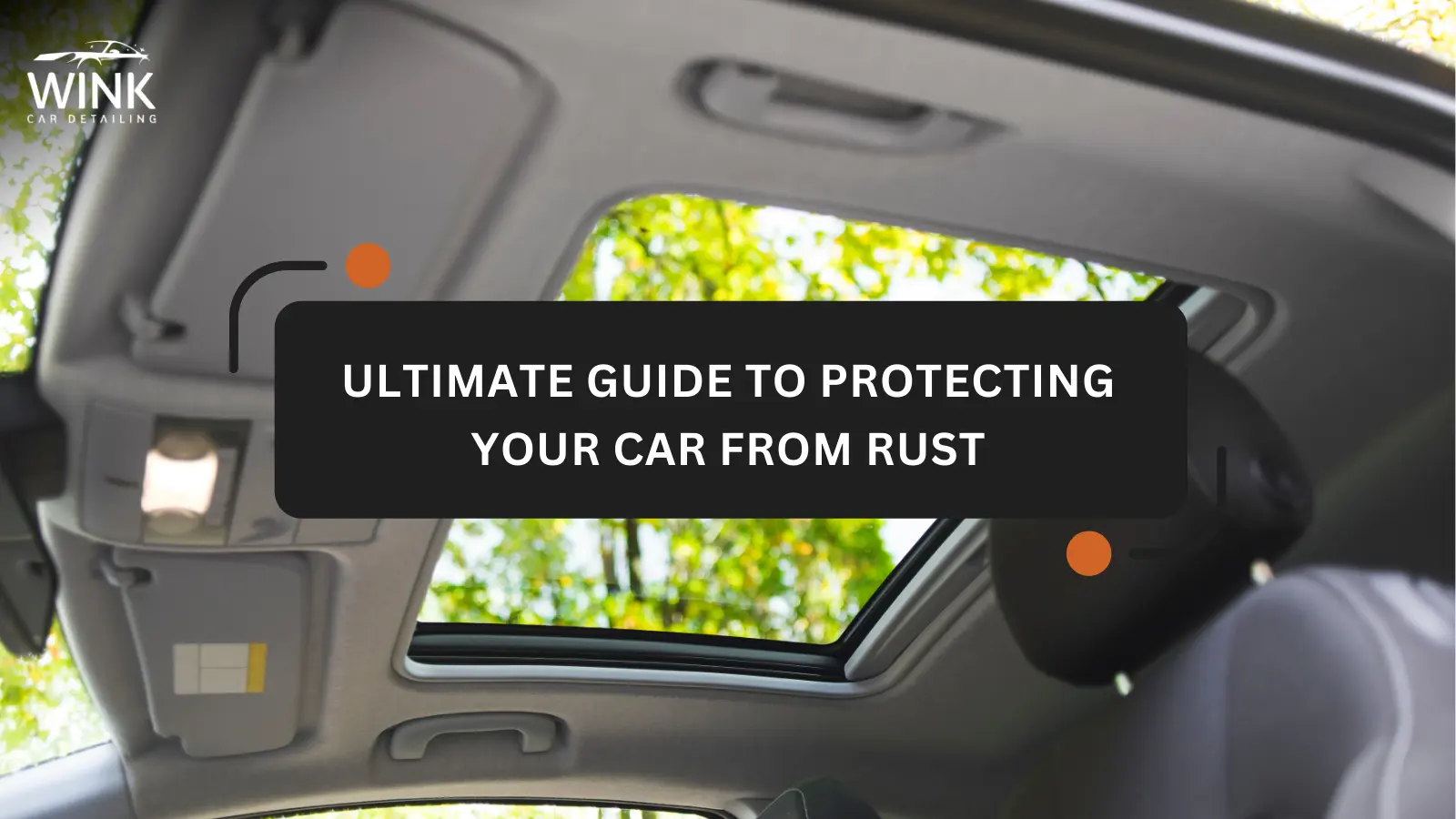Ultimate Guide to Protecting Your Car from Rust
Rust is one of the most persistent enemies of car owners. It doesn’t just tarnish the appearance of your vehicle; it can severely damage its structural integrity and value. If you're a car enthusiast or just someone looking to prolong your vehicle’s life, learning how to rust proof your car is essential. This guide walks you through the causes of rust, preventive measures, and the best methods to keep your car looking and functioning like new.
Understanding the Enemy
Rust occurs when iron reacts with oxygen and moisture to form iron oxide. Cars, primarily made of steel, are highly susceptible to this process when exposed to water, salt, and air. Common culprits include:
- Road Salt: Especially in winter, road salt accelerates corrosion by creating a chemical reaction that speeds up rust formation.
- Humidity: High moisture levels, especially in coastal regions, can lead to quicker rusting.
- Neglected Maintenance: Small chips or scratches in the paint can expose metal to moisture, leading to rust.
Why Rust Proofing Is Essential
Rust isn’t just a cosmetic issue; it’s a safety concern. If left unchecked, rust can spread to critical components like the frame, suspension, and brakes. This can compromise your car’s safety and make repairs costly. Rust proofing your car helps:
- Extend Vehicle Lifespan: Prevents structural damage and ensures durability.
- Retain Value: A rust free car has better resale value.
- Save Money: Preventative measures are far cheaper than major repairs.
Steps to Rust Proof Your Car
1. Wash Your Car Regularly
Dirt and grime trap moisture against the metal, creating a breeding ground for rust. Regular washing, especially in winter or after driving on salty roads, removes these contaminants.
- Use a pressure washer to clean hard to reach areas like wheel wells and undercarriage.
- Avoid letting mud or salt accumulate for long periods.
2. Wax Your Car
Wax acts as a protective barrier against moisture and road grime.
- Apply a high quality car wax at least twice a year.
- Focus on areas most exposed to the elements, like the hood, doors, and bumper.
3. Inspect for Chips and Scratches
Even small chips can expose bare metal to moisture.
- Regularly check for damage to the paint, especially after long trips.
- Use touch up paint to seal any chips and prevent rust formation.
4. Use Rust Proofing Sprays
Rust proofing sprays are an effective way to protect vulnerable areas. These sprays create a protective coating over the metal, repelling moisture.
- Apply to areas like the undercarriage, wheel wells, and door edges.
- Opt for sprays with long lasting formulas for better protection.
Professional Rust Proofing Options
If you prefer a more robust solution, professional rust proofing services offer long term protection. Here are the most popular methods:
1. Electronic Rust Prevention Modules
These systems emit a weak electric current through your car’s metal to slow down the oxidation process. While opinions on their effectiveness vary, they can complement other rust proofing measures.
2. Oil Based Coatings
Oil coatings are applied to the undercarriage and other exposed areas. They seep into crevices, preventing moisture from settling.
- Benefits: Flexible, long lasting, and can be reapplied annually.
- Drawback: Messy and may drip initially.
3. Rubberized Undercoating
This method involves spraying a thick, rubber like substance onto the undercarriage to create a barrier against moisture and debris.
- Benefits: Durable and effective against impact damage.
- Drawback: Difficult to remove if repairs are needed.
DIY Rust Proofing Tips
If you enjoy taking a hands on approach, you can rust proof your car at home. Here's how:
- Clean Thoroughly: Start by washing and drying your car, focusing on hidden areas like the undercarriage.
- Apply Rust Converter: Use a rust converter on any areas already affected by rust. This chemical neutralizes rust and prevents it from spreading.
- Use a Sealant: Apply a sealant or rust proofing spray to protect exposed metal.
- Reapply Annually: Make rust proofing a yearly ritual for consistent protection.
Special Considerations for Winter Driving
Winter is particularly harsh on cars. To protect your vehicle during this season:
- Wash Frequently: Snow and road salt are a dangerous combination. Clean your car weekly to remove salt buildup.
- Add Mud Flaps: These reduce salt and debris spray, minimizing the risk of rust.
- Store Indoors: If possible, park your car in a garage to shield it from the elements.
How to Spot Rust Early
Catching rust early can save you from expensive repairs. Look for:
- Discoloration: Orange or brown spots on paint or metal.
- Bubbling Paint: Indicates rust forming beneath the surface.
- Visible Holes: Advanced rust can eat through metal, creating holes.
Address these issues immediately to prevent them from worsening.
Maintaining a Rust Free Car for the Long Term
Rust proofing is not a one time effort. To maintain a rust free car:
- Stay consistent with regular cleaning and inspections.
- Reapply protective coatings as needed.
- Avoid exposing your car to prolonged moisture or salt.
Bottom Line
Rust proofing your car is an investment in its longevity, safety, and value. Whether you opt for professional treatments or a DIY approach, taking preventive steps can save you from costly repairs and keep your car looking great for years to come.
Remember, rust doesn’t wait—it spreads quickly once it starts. So, don’t delay; protect your car today!





